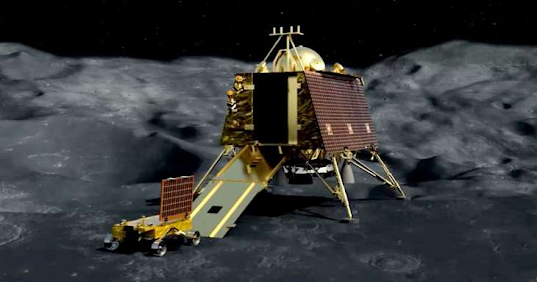International Research Awards on Science, Health and Engineering
Online Nomination: https://x-i.me/veershen
Chandrayaan 2 Moon Landing: Countdown begins for India's historic mission as Chandrayaan-2 will make its most significant move to journey to the moon. As the Vikram Lander will touchdown the lunar surface during the wee hours of Saturday, ISRO will prove its mettle in the space science. But do you know how ISRO created artificial moon surface to test rover, lander?
Notably, the surface of the moon and that of the earth are completely different. So ISRO created an artificial moon surface to test rover and lander.
The Indian space agency has done a lot of hard work on the ground so that its moon lander -- Vikram -- can soft-land safely and rover Pragyaan can move around.
The moon's surface is covered with craters, rocks and dust. Its soil is also of different texture as compared to that of earth. The legs of lander and wheels of the rover had to be tested before Chandrayaan 2 launch.
ALSO READ: Live Streaming: Watch Chandrayaan-2 Moon Landing Live on these platforms
So, the Indian space agency created moonlight environment for testing its rover. Importing lunar soil-like substance from the US was a costly affair. So, ISRO had to look for a local solution as its need was about 60/70 ton of soil.
As many geologists had told ISRO that there were "anorthosite" rocks near Salem in Tamil Nadu that would be similar to features of moon soil or regolith. It is when ISRO finalised to take the "anorthosite" rocks from Sithampoondi and Kunnamalai villages in Tamil Nadu for moon soil.
Notably, the surface of the moon and that of the earth are completely different. So ISRO created an artificial moon surface to test rover and lander.
The Indian space agency has done a lot of hard work on the ground so that its moon lander -- Vikram -- can soft-land safely and rover Pragyaan can move around.
ALSO READ: Live Streaming: Watch Chandrayaan-2 Moon Landing Live on these platforms
So, the Indian space agency created moonlight environment for testing its rover. Importing lunar soil-like substance from the US was a costly affair. So, ISRO had to look for a local solution as its need was about 60/70 ton of soil.
As many geologists had told ISRO that there were "anorthosite" rocks near Salem in Tamil Nadu that would be similar to features of moon soil or regolith. It is when ISRO finalised to take the "anorthosite" rocks from Sithampoondi and Kunnamalai villages in Tamil Nadu for moon soil.


No comments:
Post a Comment